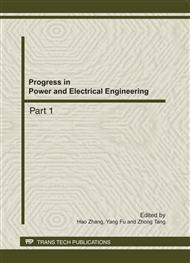p.3
p.9
p.19
p.24
p.29
p.33
p.37
p.41
Mass Transfer Mechanisms of Weak Base Complex System in Porous Media
Abstract:
The fourteen physical models were filled with oil sand, permeability of 1000 × 10-3μm2, inner diameter of 1.8 cm, length of 80 cm. The experimental temperature is 45 °C. 0.6 PV liquid chemical flooding was injected (weak base, strong base, surfactant, polymer, weak base complex system, strong base complex system), then injection of 2.4 PV water. The concentration of chemical agent was regularly measured. The curve of comparative was designed by the relative concentration of chemical agent vs. production C/C0. The effect of the injection rate vs. a single chemical transport was analyzed in porous media, a single chemical and complex system, and strong base vs. weak base complex system about transport in porous media rule differences. The results showed that the displacement rate affected transport rules in porous media of surfactant, polymer, and strong base. The greater the displacement rate was, the sooner three kinds of chemical agents appeared. The largest the concentration was, the earlier maximum ratio concentration appeared. When the displacement rate was fixed, the maximum ratio concentration for each chemical was greater than that of a single system. For the ASP system, weak base, surfactant and polymer occur chromatography separation. chromatographic separation of strong base system was more evident than the weak base, indicating that the system suitable for weak base ASP flooding.
Info:
Periodical:
Pages:
3-8
Citation:
Online since:
October 2011
Authors:
Price:
Сopyright:
© 2012 Trans Tech Publications Ltd. All Rights Reserved
Share:
Citation:


